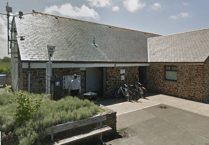A TALK at a Cornish military museum has provided fascinating details about the defences built to defend our shores during the Second World War.
On Friday, November 12, at Bodmin Keep Army Museum there was a fascinating talk by independent curator Tim Craven exploring Britain’s Second World War coastal fortifications and the artworks in the museum’s current exhibition, ‘Concrete Castles’, which have been inspired by them.
After the fall of France in June 1940, and with the very real threat of invasion of Britain by Hitler’s all-conquering forces, Winston Churchill’s government responded immediately and turned the coastal areas of Britain into a war zone. The new defences included 89,000 pillboxes, trenches, anti-tank barriers and miles of coiled barbed wire.
Cornwall played a major role in the Second World War, not only with fighters who flew from the many RAF bases providing escorts for heavy bombers on their raids over France, but also in the preparations for the D-Day Normandy landings. The county’s exposed peninsula was at risk from the air and the sea. During 1940 and 1941 thousands of bombs fell on Cornwall and there were even airborne landings of enemy troops.
The huge stretches of coastline and numerous beaches suitable for amphibious landings by enemy tanks and troops, became a fortress with lines of pillboxes, ‘dragon’s teeth’, minefields and miles of barbed wire. Exits from the beaches were blocked by anti-tank obstacles and defended roadblocks, with defences from the most at-risk beaches extending five miles inland to create highly defended areas.
Today, these structures can be found all around the coast of Cornwall from Bude to Sennen and St Anthony’s Head, and anyone walking the coastal path can easily discover and explore them.
More information about Cornwall’s Second World War Coastal defences can be found on the museum’s website bodminkeep.org/museum-history/exhibitions/coastal-fortifications-of-the-second-world-war




